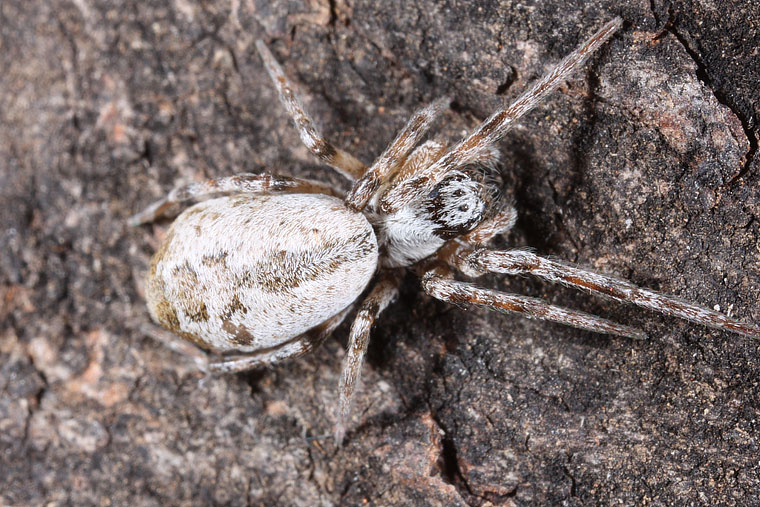- Female, Bowra Station, near Cunnumulla GJA4983
- Female, Bowra Station, near Cunnumulla GJA4983
- References
Phryganoporus nigrinus is a cribellate spider, meaning it has a cribellem for producing silk on the underneath of its abdomen. The simple, asymmetrical, sheet web rarely spans more than 25 cm and is often found on the dead branches of spindly shrubs. The retreats are of unique shape throughout the large range of this species-elongate, horn-like silk tubes attached along a branch, with the wider entrance usually opening downward, sometimes to the side. The web and retreat may be littered with debris and discarded prey. The taxonomy and distribution Phryganoporus Simon was revised by Mike Gray in Records of the Australian Museum 2002, 54(3): 275-292. Distribution for P. nigrinus was shown to be west and south west Queensland, central and Western Australia, extending to the west and south west coast of WA, in open forest, woodland and shrubland. The holotype is a female from Boyanup, Western Australia, colleced 1905. Its body shape is more cylindrical than other Phryganoporusspecies. Carapace colour varies from silvery grey to brown, depending on the density of white hairs present. The abdomen is silvery grey-brown on the sides with dark brown flecks increasiing towards the rear and underneath. There is a broad, dark brown stripe at the front of the abdomen followed by five or six dark brown chevrons. The legs have wide, brown-black pigment rings. Female specimens from the Great Victoria Desert are a light, rusty reddish colour (in alcohol) with all chevrons fused. Specimens from Queensland have weakly pigmented abdominal patterning compared with central & western Australian representatives. Descriptions adapted from Gray 2002.
Female, Bowra Station, near Cunnumulla GJA4983

Female, Bowra Station, near Cunnumulla GJA4983

References
- Gray 2002 - GRAY, MICHAEL R., 2002. The taxonomy and distribution of the spider genus Phryganoporus Simon (Araneae:
Amaurobioidea: Desidae). Records of the Australian Museum 54(3): 275-292.